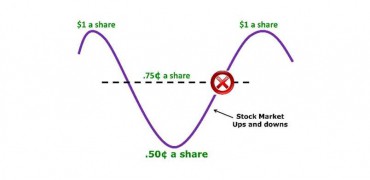DEFINITION of Averaging down
Averaging down refers to the purchase of additional units of a stock already held by an investor after the price has dropped. Averaging down results in a decrease in the average price at which the investor purchased the stock.
WHAT IT IS IN ESSENCE
The investing approach that all traders need to think over is “averaging down.” This means buying a stock, watching it drop, and then buying more shares, resulting in a lower average price. You might hear people tell you that averaging down is a great idea, but in fact, it’s generally a risky way to operate. If the asset’s price drops, the original trade’s loss has been increased further. For this reason, the subject of whether averaging down is a viable strategy is divisive among traders.
Averaging down allows investors to lower their cost basis in the stock, reducing the amount the stock must rise in order to show a positive return. However, it also means if the stock continues falling, losses will be greater since more shares are now owned.
A market average is a measure of the overall price level of a given market, as defined by a specified group of stocks or other securities. A market average equals the sum of all current values of stocks in the group divided by the total number of shares in the group.
HOW TO USE
In order to calculate your weighted average price per share, you have to use the formula. In words, this means that you multiply each price you paid by the number of shares you bought at that price. Then, add up all of these results. Finally, divide by the total number of shares you purchased.
Calculating your weighted average price per share can help you assess the performance of an investment that was made in several transactions.
If you bought all of your stock in a single transaction, it’s easy to determine how your investment is performing. Simply look at the current share price and compare it to the price you paid.

